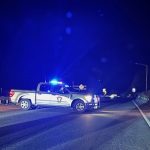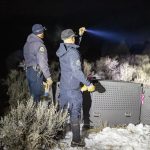School Views: The science behind the snow day
Every winter I’m asked, “Who decides when we have a snow day?” or “Can I join the snow day team?” I certainly understand the interest. It’s an exclusive group of four highly trained and qualified individuals that spend countless hours on almost everything other than meteorology. Together, we practice quasi-science to determine the fate of the district when snowy weather occurs. While I jest, I certainly don’t mean to make light of how we make our decisions.
Our No. 1 priority is safety. Can our school buses, student drivers, staff members and families make it to their destination safely? Whether that’s around the corner to their community school, or up and down the valley. The safety of all in our community is the largest factor we take into consideration. It is also important to consider that Eagle County School District covers over 1,600 square miles. The conditions in Vail may not match what is going on in Dotsero.
The snow day team consists of myself, our director of transportation, our chief operating officer, and our chief communications officer. When the forecast is calling for a large amount of snowfall, we decide the night before to “meet” at 5 a.m. with a phone call or virtual meeting. We each have our own research methods and preparation before we have our early morning deliberation.
Tim Owsley, director of transportation
I’m usually the one that reaches out the night before to invite everyone to join me at 5 a.m. to talk about the weather. As a skier (and many years ago, a powder chaser), I’m always paying attention to the snow and forecasts. I use mountain cams, NOAA forecasts, radar images, powder chasers’ forecasts, and the cameras along Interstate 70 and through the state to monitor conditions.
These tools are very helpful in knowing what’s happening and what might happen across our county. As the director of transportation, I know my staff and buses well and want to ensure both their safety and that of our district staff and students, motorists on the road, and our Eagle County families.

Support Local Journalism
If the roads are unsafe, then we want everyone to stay home. Contrary to popular belief, I do a lot of my storm and road conditions monitoring through the night until midnight or so, and then again starting at about 4 a.m. One thing I’m watching is what happens through the night: accumulations and conditions. The other big factor is what the coming day may look like and whether conditions will be improving or worsening during the day. It may snow a lot the night before, but our plow crews in Eagle County are diligent and hardworking individuals who take great care of our roads. Oftentimes school buses are on the roads to pick up students earlier than most motorists, and our local crews know that and help get those routes cleared early for us.
Sandy Farrell, chief operating officer
The first thing I do is touch base with our maintenance team because they’re responsible for the plowing at all the schools. I ask how much snow has fallen and how they are progressing in clearing the pavement. I also like to look at the school’s exterior cameras and gauge what the current conditions are looking like. These cameras are extremely helpful, and we’ve even looked at adding a snow stake so we aren’t estimating the amount of snow that has fallen.
Matt Miano, chief communications officer
The first thing I do is pour a cup of coffee. Then I look out the window and see what things are doing in the neighborhood. I happen to live very close to one of our schools, so I get a bird’s eye view of what’s going on. From there I check out social media and see what neighboring districts are saying and doing (if anything). I also check what the local resorts have reported. I find that EC Alerts are also a great indicator of road conditions and will read through those if any have come in overnight or early that morning.
Phil Qualman, superintendent
I get up and, in no particular order, look at snow cams at Vail and Beaver Creek, check out cameras up and down I-70, read the weather reports from OpenSnow.com and NOAA.gov — paying special attention to their hourly graphs that show precipitation, temperatures and winds. I also look at the neighborhood streets and see how the plowing is coming and whether there have been any EC Alerts put out. From there, I’m ready to check in with the team.
Once Tim, Sandy and Matt all sign on, we share what we’re seeing, what we’ve read, and any opinions we have. I have a lot of faith in Tim’s knowledge of his drivers and their comfort levels, as well as his local knowledge of the routes. So I take that into consideration along with the information from Sandy and Matt and then make the collective call on what we should do for the day. So far, this season’s snow has been plentiful and we have convened on a few 5 a.m. calls, but Mother Nature has yet to deliver the right conditions with the right timing to call a snow day. However, our snowiest months are still ahead.
If you’re hoping for a snow day, do your snow dance, pray to Ullr, go get your car washed, or any other ritual you have to summon the snow. You don’t need to email and text pictures of the snowfall outside your home, especially if it’s really a Google image search result for mounds of snow in Tahoe. As for openings on the committee, visit our website for current job postings, but for the time being, we’ve got a solid crew that takes the proper details into consideration and makes level-headed decisions that do hit on our No. 1 priority: safety.
Philip Qualman is the superintendent of Eagle County School District. Email him at philip.qualman@eagleschools.net.











